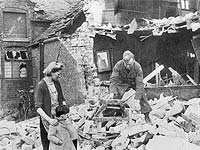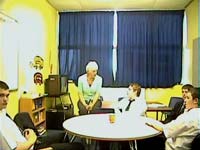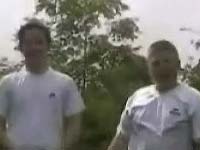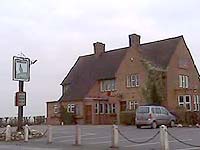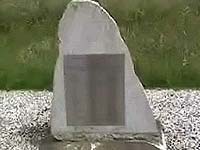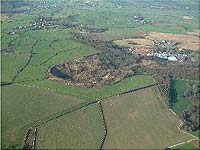
Home Page Project ListingsProject OverviewBackground / ContextLearning ResourcesUseful Links |
The Fauld Explosion 1944SchoolJohn Taylor High School Contact:
Mrs T Joiner ContributorsThe pupils involved have been the Y11 Practical History Group.This isa non-examination class designed to develop skills through the study of the local area. The students are Vanessa Barnett, Matt Rose, Kane Dearn, Wayne Bailey, Stevie Clissold and Henry Ashenden. Staff assisting have been Mrs S Plant and Mrs T Joiner. The veterans have been Mr J Cooper, Mr J Major, Mrs M McKinnon, Mrs I Roberts, and Mr J Hicklin. Others who have assisted are the Vicar of Hanbury , Reverend Timothy Fox and the verger of that church Mr S.Wynn. Technical assistance with the video was provided by Mr A Duncan, Mr T Morris and Miss N. Joiner. Aims/ObjectivesThe aim of the video was to capture the memories of people who were alive at the time of the Fauld Explosion and who were prepared to talk to us about their memories of that time. We wanted to talk to ordinary people who may not have told their story before, as well as people who were closely involved and were therefore already on record.. We also wanted to record the crater as it is now, so that future generations can experience it. Our last aim was to create a leaflet for the general public that could be made available in various places, so that brief details of the disaster and how to get to the crater are more available. I hoped that the group would develop their team working skills, as there were many decisions to be made and much to be organised. I wanted them to develop questioning techniques and to gain confidence through carrying out successful interviews with members of the public. ActivitiesWe went to the site of the explosion on a number of occasions. We looked at the crater and the surrounding area. We filmed at various locations .We did research on the internet and in documents from the time. We watched the film, ’Goodnight Mr Tom’ because it involved a young boy and the effects of bombs going off in the war. We interviewed various people who were alive at the time and had memories to share. These interviews were recorded on film. Mr Cooper, one of the volunteers, gave a talk with slides about the explosion. Then we assembled the final video using movie maker. We listened to music from World War Two so we could select something suitable to add atmosphere to the finished film. The choice was quite difficult, because something jolly might seem insulting, but something sad could be too sombre. We eventually chose an instrumental version of ‘White Cliffs of Dover’, which we hope sets the right tone.
The image above shows the group interviewing Mrs Mavis McKinnon, who was six years old in 1944. She vividly remembers how the explosion shook her house and sent her family racing for their bomb shelter at the top of the garden. It was particularly poignant when one student asked if her father was frightened. She told us, “I’ve never seen my father so frightened”.
The image above shows two students being filmed at the crater. We had to decide what to film and what to say about each location. This scene was about one of the large lumps of rock which was sent up into the air by the force of the explosion. OutcomesWe eventually interviewed six people, visited the crater numerous times, visited Hanbury Church and climbed the church tower to see if the crater was visible from there (it was).The students grew in confidence and were able to interview people with increasing skill. Planning skills developed as we learned to storyboard the video, generate interview questions and organise a programme of work. Students learned how to use a digital video camera, both on location and back at school. They had to consider both lighting and sound. A microphone was eventually used to help amplifying the sound during interviews at school. Computer skills developed as we grappled with film to edit, internet research to carry out, CDs of music to listen to and eventually capturing still images for this report.
This shows the Cock Inn Public House, which is where it is safe to park when visiting the crater. It is a new building, because the previous pub was caught in the blast and was so badly damaged that it had to be knocked down. This is where we always parked the school minibus we travelled in when visiting the crater.
This is the memorial stone to the people who died in the explosion. It shows that the people have not, and will not, be forgotten. It also shows how the accident crossed international boundaries, because the stone was supplied from Italy in memory of the Italian Prisoners of War who were killed that day.
This shows the crater as it is today, a massive hole in the middle of rolling countryside. It looks quite gentle now. and is clearly a sanctuary for wildlife. We have seen photographs of the crater as it was at the time and several interviewees referred to it as an eerie, dangerous moonscape. |
